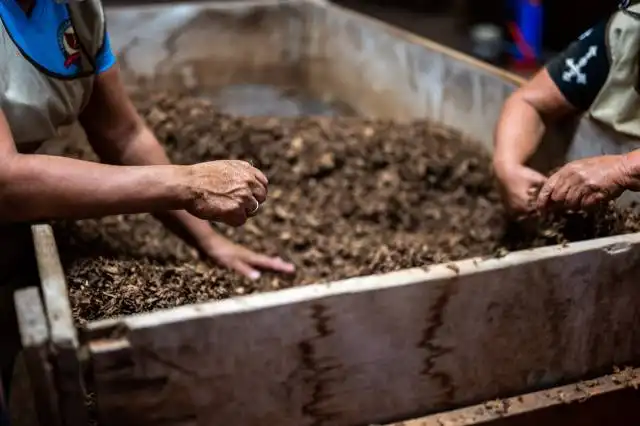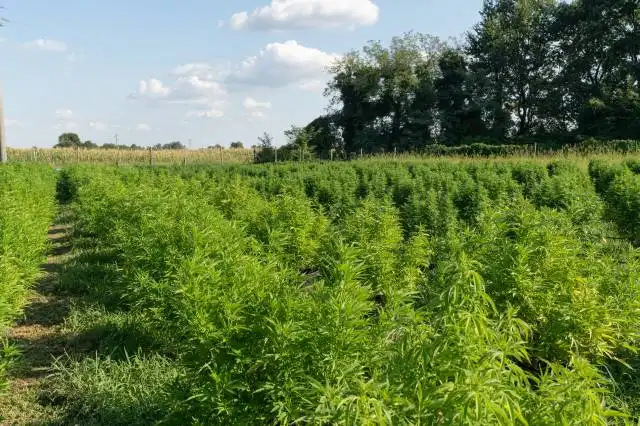Start a Reusable Grocery Bag Company
Emerging as an Eco-Warrior: Adding a Touch of Sustainability to Grocery Shopping
| Updated


REUSABLE GROCERY BAG COMPANY
Kudos on your vision to start a Reusable Grocery Bag Company! In a world battling plastic waste, your business is equipped to be a hero in an eco-friendly cape. This venture essentially involves manufacturing and selling bags that can be repeatedly used for grocery shopping, injecting an element of style and sustainability into the mundane chore. Grasp the reins of this plastic-saving endeavor that not only benefits our planet but also has a promising market potential given the increasing global preference for 'green businesses'.
Jump to Business Plan
RELATED BUSINESS IDEAS
Browse ALL Sustainability & Eco-Friendly Initiatives Business Ideas
Discover Your Perfect Domain
Unlock the door to your online success with our hand-picked selection of premium domain names. Whether you're starting a new venture or rebranding an existing one, the right domain can set the tone for your digital presence. Browse through our curated list, each with its unique potential to enhance your brand's visibility and credibility.
REUSABLE GROCERY BAG MINI BUSINESS PLAN
This a quick reality check to help you identify the strengths and weaknesses of your business concept before you dive in.
Expected Percent Margin:
- Gross Margin: 30-50%
- Net Profit Margin: 10-20%
Earnings Expectations:
- Daily Earnings: $100 - $300
- Weekly Earnings: $700 - $2,100
- Monthly Earnings: $3,000 - $9,000
- Annual Earnings: $36,000 - $108,000
Actions to Hit Those Numbers:
Inventory Management:
- Initial Investment: At least $5000-$10,000 for reusable bag production.
- Supplier Network: Develop relationships with at least 2-3 reliable suppliers for raw materials.
Marketing and Customer Acquisition:
- Social Media: Post 2-3 times a week on platforms popular with your target demographic.
- Online Advertising: Budget at least $500 - $1,000 a month for online ads.
Sales and Customer Reorders:
- Partnerships: Partner with grocery stores, farmers markets, and local businesses to sell your products.
- Pop-Up Stalls: Attend local events and setup pop-up stalls.
Cost Control:
- Production Cost: Improve production process to reduce wastage and cost.
- Utilities and Maintenance: Choose energy-efficient tools and machines to reduce costs.
Business Operations:
- E-commerce: Develop a user-friendly website to capture online orders.
- Transaction Volume: Aim for 10-30 transactions per day with a price point of $10-$20 per bag.
These are generalized estimations and can vary depending on location, economic conditions, and individual business strategies. Always consult with a financial advisor for personalized advice.
NOT WHAT YOU HAD IN MIND? Here are more ideas



Browse ALL Sustainability & Eco-Friendly Initiatives Business Ideas
Grab Your Business Website Name
Before you get caught up in the whirlwind of setting up your business, invest in a domain name. It's a small but significant step that lays the foundation for your brand and makes it easier for customers to find and trust you. Just like you wouldn't build a house without securing the land first, don't build a business without securing your domain name.
"Why? Can't that wait?" Here's why it shouldn't
Step 1: Determine if the Business is Right for You
Breakdown of Startup Expenses
When starting a reusable grocery bag business, it is important to consider the startup costs associated with the venture. These costs can include the cost of materials, the cost of any equipment needed to make the bags, the cost of any marketing materials, and the cost of any permits or licenses required to operate the business. Additionally, you may need to consider the cost of renting a workspace, hiring employees, and any other costs associated with getting the business up and running.
Breakdown of Ongoing Expenses
Once the business is up and running, there are ongoing expenses to consider. These include the cost of materials to make the bags, the cost of any marketing materials, the cost of any permits or licenses required to operate the business, the cost of renting a workspace, and the cost of any employees. Additionally, you may need to consider the cost of any taxes, insurance, and other fees associated with running the business.
Examples of Ways to Make Money
When starting a reusable grocery bag business, it is important to consider the various ways to make money. These can include selling the bags directly to customers, selling the bags to retailers, wholesaling the bags to other businesses, and offering custom printing services on the bags. Additionally, you may be able to make money by offering bulk discounts, offering subscription services, and offering discounts for referrals.
Step 2: Name the Business
When deciding on a name for your reusable grocery bag business, it is important to consider the type of message you want to convey to potential customers. It is also important to make sure the name is easy to remember and spell. Consider using words that evoke the idea of sustainability, such as “green” or “eco-friendly.” Additionally, it is important to make sure the name is not already taken by another business. To do this, you can search the internet and the US Patent and Trademark Office website to make sure the name is not already in use. You can also check with your local Chamber of Commerce to make sure the name is not already taken in your area.
Once you have chosen a name, you will need to register it with the US Patent and Trademark Office. This will protect your business name from being used by another company. Additionally, you will need to register the name with your state’s Secretary of State office. This will ensure that your business name is legally protected and that no one else can use it.
Finally, you will need to register your business name with the Internal Revenue Service. This will allow you to open a business bank account and apply for any necessary permits and licenses. Additionally, registering your business name with the IRS will also make it easier to file taxes and apply for any necessary business loans.
Step 3: Create a Business Plan
Creating a business plan is an essential step in starting a reusable grocery bag company. The business plan should include an executive summary, a description of the company, a market analysis, an organizational structure, a description of the product or service, a description of the marketing strategy, a description of the operational plan, a financial plan, and an appendix. The executive summary should provide a brief overview of the business plan, including the company’s purpose, the products or services it will offer, the target market, and the financial goals. The description of the company should include the company’s name, its legal structure, and its location. The market analysis should include an analysis of the target market, the competition, and the expected market share. The organizational structure should include the roles and responsibilities of the owners, managers, and employees. The description of the product or service should include the features and benefits of the product or service, the pricing strategy, and the production process. The description of the marketing strategy should include the promotional activities, the advertising strategy, and the sales strategy. The operational plan should include the daily operations, the inventory management, and the customer service. The financial plan should include the startup costs, the ongoing expenses, and the expected revenue. Finally, the appendix should include any additional documents, such as resumes, contracts, and permits.
Step 4: Secure Financing
Securing financing is an important step in starting a business. There are many sources of financing available to entrepreneurs, including venture capital, angel investors, bank loans, and crowdfunding. It is important to research each of these sources to determine which one is the best fit for the business.
Venture capital is a type of financing that is provided by venture capitalists, who are investors that provide capital to startups in exchange for equity. This type of financing is typically used for high-growth businesses that have the potential to generate significant returns for the investors.
Angel investors are individuals who provide capital to startups in exchange for equity. Angel investors typically have more flexible terms than venture capitalists and are often willing to provide financing to businesses that may not be able to secure venture capital.
Bank loans are a traditional source of financing for businesses. Banks typically require businesses to provide collateral and have a good credit score in order to qualify for a loan.
Crowdfunding is a relatively new source of financing that has become popular in recent years. Crowdfunding allows entrepreneurs to raise money from a large number of people, often in exchange for rewards or equity in the business.
Tips for Securing Financing
When seeking financing, it is important to have a well-developed business plan that outlines the business’s goals and objectives. It is also important to have a clear understanding of the financial needs of the business and the potential return on investment for the investors. Additionally, it is important to have a good credit score and to be prepared to provide collateral if necessary. Finally, it is important to research the different sources of financing and to determine which one is the best fit for the business.
Step 5: Obtain Licenses and Permits
The types of licenses and permits necessary to start a reusable grocery bag company will vary depending on the location of the business. Generally, businesses will need to obtain a business license, a seller’s permit, and any other permits required by the local government. It is important to research the specific requirements in the area where the business will be located.
Where to Obtain Licenses and Permits
The business owner should contact the local government to determine the exact licenses and permits that are required. The local government should be able to provide information on the application process and fees associated with obtaining the necessary licenses and permits. Additionally, the local government may be able to provide resources to help the business owner navigate the process.
Cost of Licenses and Permits
The cost of licenses and permits will vary depending on the location of the business. Generally, the cost of licenses and permits will be a few hundred dollars. It is important to research the cost of licenses and permits in the area where the business will be located.
Timeframe to Obtain Licenses and Permits
The timeframe to obtain licenses and permits will vary depending on the location of the business. Generally, it can take several weeks to obtain the necessary licenses and permits. It is important to research the timeframe in the area where the business will be located.
Benefits of Obtaining Licenses and Permits
Obtaining the necessary licenses and permits is important for any business. It helps to ensure that the business is operating legally and is in compliance with local laws. Additionally, it can help to protect the business from potential legal issues in the future.
Step 6: Choose a Location
When choosing a location for a reusable grocery bag company, there are several factors to consider. First, the business should be located in an area with a large population of potential customers. Second, the location should be accessible to customers, with easy access to public transportation and ample parking. Third, the business should be located in an area with a favorable tax climate. Fourth, the business should be located in an area with access to suppliers and vendors. Finally, the business should be located in an area with a supportive business climate, with access to resources such as business incubators and mentors.
Benefits of an Online Presence
In addition to a physical location, a reusable grocery bag company should also consider having an online presence. An online presence provides the business with the opportunity to reach a larger audience and expand its customer base. It also allows the business to offer a wider range of products and services. Additionally, an online presence can help the business to build its brand and increase its visibility. Finally, an online presence can help the business to save money on overhead costs, such as rent and utilities.
Step 7: Purchase Equipment
The types of equipment needed to start a reusable grocery bag company will depend on the type of business you are running. If you are planning to manufacture the bags yourself, you will need to purchase sewing machines, fabric, thread, and other materials. If you are planning to outsource the manufacturing, you will need to purchase the necessary equipment for printing, cutting, and packaging the bags. You may also need to purchase additional equipment such as a computer, printer, and other office supplies.
Cost of Equipment
The cost of the equipment you need to start a reusable grocery bag company will vary depending on the type of business you are running. If you are manufacturing the bags yourself, you will need to factor in the cost of the sewing machines, fabric, thread, and other materials. If you are outsourcing the manufacturing, you will need to factor in the cost of the printing, cutting, and packaging equipment. Additionally, you will need to factor in the cost of any additional equipment such as a computer, printer, and other office supplies.
Where to Purchase Equipment
When purchasing the equipment you need to start a reusable grocery bag company, you have several options. You can purchase the equipment from a local store, online retailer, or manufacturer. If you are purchasing the equipment from a local store, you can often negotiate a better price. If you are purchasing the equipment online, you can often find better deals and discounts. Additionally, you can often find used equipment at a discounted price.
Financing Options
If you are unable to purchase the equipment you need to start a reusable grocery bag company upfront, you may be able to finance the purchase. Many stores and online retailers offer financing options, such as 0% interest for a certain period of time. Additionally, you may be able to take out a loan from a bank or other financial institution. Be sure to shop around and compare rates before making a decision.
Step 8: Market the Business
The eighth step in starting a reusable grocery bag company is to market the business. There are many different marketing strategies that can be used to get the word out about the business. Examples of marketing strategies that can be used include:
Social media: Creating a presence on social media platforms such as Facebook, Twitter, and Instagram can be a great way to reach potential customers. Posting regularly about the business and its products can help to build a following and increase visibility.
Advertising: Placing advertisements in local newspapers, magazines, and on radio and television can be a great way to reach a wider audience.
Networking: Networking with other businesses in the area can be a great way to get the word out about the business. Attending local events and trade shows can be a great way to meet potential customers and partners.
Promotional materials: Creating promotional materials such as flyers, brochures, and business cards can be a great way to get the word out about the business. These materials can be distributed in the local area or sent out with orders.
Word of mouth: Word of mouth is one of the most powerful marketing tools. Encouraging customers to share their experiences with the business with their friends and family can be a great way to get the word out about the business.
Tips for Effective Marketing
In addition to the above examples of marketing strategies, there are also some tips that can be used to ensure that the marketing efforts are effective. These tips include:
Have a plan: It is important to have a plan for the marketing efforts. This plan should include the goals of the marketing efforts, the strategies that will be used, and the budget for the marketing efforts.
Track progress: It is important to track the progress of the marketing efforts. This can be done by tracking the number of followers on social media, the number of views on advertisements, and the number of people attending events.
Monitor feedback: It is important to monitor feedback from customers. This can be done by asking customers to leave reviews on social media and by asking customers for feedback after events.
Adjust as needed: It is important to adjust the marketing efforts as needed. If a certain strategy is not working, it may be necessary to adjust the strategy or try a different one.
Have fun: It is important to have fun with the marketing efforts. This can help to make the marketing efforts more effective and can help to create a positive image for the business.
Step 9: Monitor Progress
Monitoring progress is an important part of running a successful business. It’s important to track the progress of the business to make sure that it is meeting the goals that were set out when the business was first started. There are a few ways to monitor progress. One way is to track sales and revenue. This can be done by tracking the number of orders that are placed each month and the amount of money that is made from each order. Another way to monitor progress is to track customer feedback. This can be done by asking customers to fill out surveys or reviews after they have used the product. This will allow the business to see what customers like and don’t like about the product and make changes accordingly. Additionally, tracking website traffic can be a great way to monitor progress. This can be done by using analytics software to track the number of visitors to the website and the amount of time they spend on the website. This can be a great way to see what content is resonating with customers and what content needs to be improved.
Step 1: Determine if the Business is Right Endeavor
Breakdown of Startup Expenses
Before starting a reusable grocery bag company, it is important to determine if it is the right business endeavor. This should include a breakdown of startup expenses. Start-up expenses can include the cost of purchasing the materials needed to make the bags, the cost of any equipment needed to make the bags, the cost of advertising and marketing, and the cost of any legal fees associated with setting up the business. Additionally, it is important to consider the cost of any labor that may be needed to make the bags.
Breakdown of Ongoing Expenses
In addition to startup expenses, it is important to consider the ongoing expenses associated with running a reusable grocery bag company. This includes the cost of purchasing materials to make the bags, the cost of any labor needed to make the bags, the cost of advertising and marketing, and the cost of any legal fees associated with running the business. Additionally, it is important to consider the cost of any equipment needed to make the bags and the cost of any maintenance needed for the equipment.
Examples on Ways to Make Money
Once the startup and ongoing expenses have been determined, it is important to consider ways to make money. This can include selling the bags directly to customers, selling the bags to retailers, or offering custom printing services for the bags. Additionally, it is important to consider other ways to monetize the business such as offering subscription services or offering affiliate programs. It is also important to consider ways to increase the value of the bags by offering additional services such as repairs or customizations.
EXPLORE MORE CATEGORIES
Browse ALL Business Idea Categories
TAKE THE NEXT STEPS









